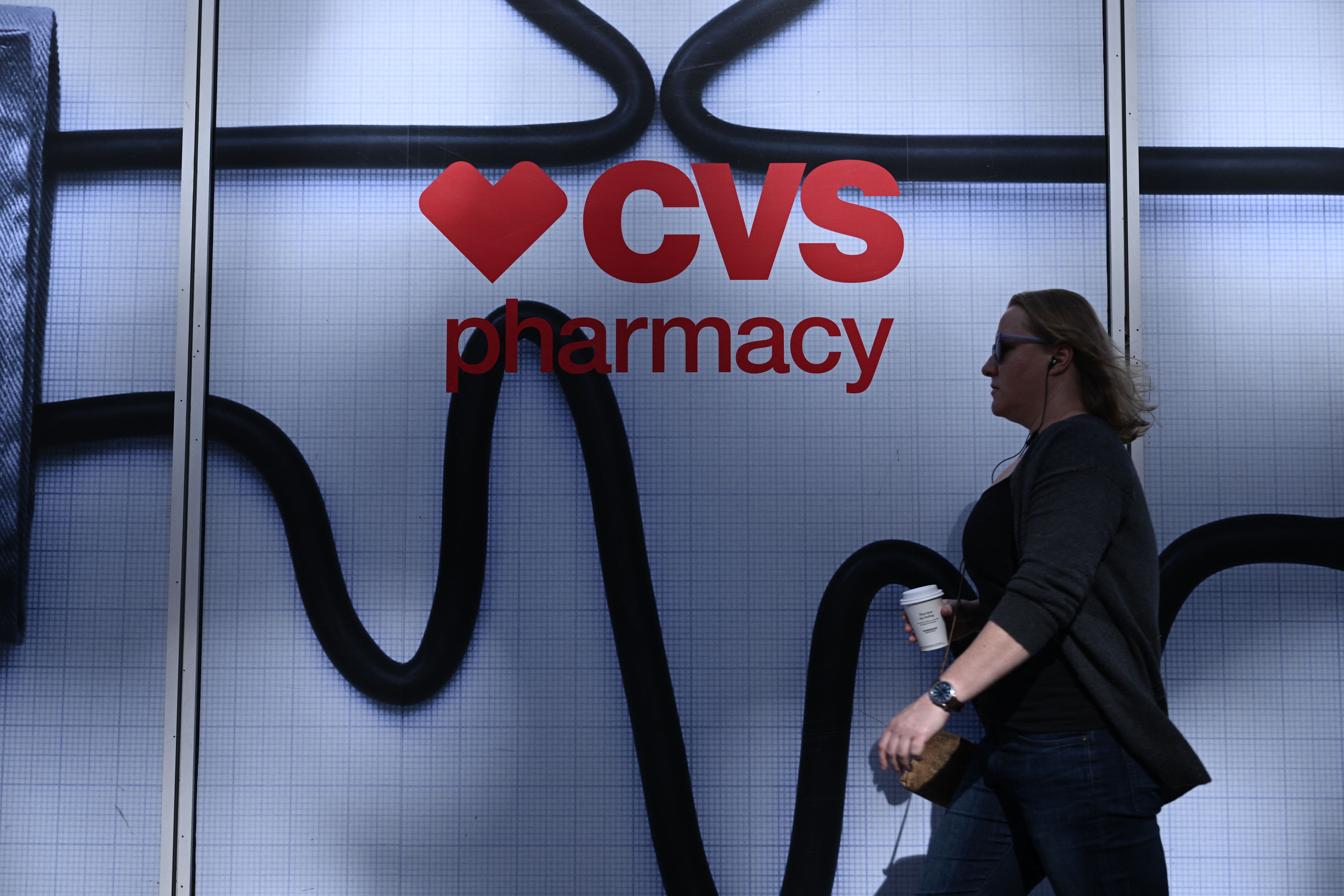
A woman walks past a CVS Pharmacy in Washington, D.C., on Nov. 2, 2022.
Brendan Smialowski | AFP | Getty Images
CVS on Wednesday reported third-quarter adjusted earnings and revenue that topped Wall Street’s expectations, lifted in part by strong revenue from the company’s health services business.
CVS booked sales of $89.76 billion for the quarter, up nearly 11% from the same period a year ago.
The company reported net income of $2.27 billion, or $1.75 per share, for the third quarter. That compares with a net loss of $3.40 billion, or $2.59 per share, for the same period a year ago. Excluding certain items, such as amortization of intangible assets and capital losses, adjusted earnings per share were $2.21 for the quarter.
Here’s what CVS reported for the third quarter compared with what Wall Street was expecting, based on a survey of analysts by LSEG, formerly known as Refinitiv:
- Earnings per share: $2.21 adjusted vs. $2.13 expected
- Revenue: $89.76 billion vs. $88.25 billion expected
CVS lowered its full-year unadjusted earnings forecast to a range of $6.37 to $6.61, down from a prior range of $6.53 to $6.75. However, it maintained its forecast on an adjusted basis, guiding to full-year adjusted earnings of $8.50 to $8.70 per share.
The results come on the last day of a nationwide walkout by pharmacy staff from CVS, Walgreens and Rite Aid to protest what they call harsh working conditions that put both employees and patients at risk. CVS told CNBC last week that the company is engaging with staff to directly address any concerns that they might have.
They also come one quarter after CVS launched a sweeping cost-cutting program as part of its push to transform from a major drugstore chain into a large health-care company. CVS deepened that push over the last year with its nearly $8 billion acquisition of health-care provider Signify Health and $10.6 billion deal to buy Oak Street Health, which operates primary-care clinics for seniors.
Shares of CVS were down 26% for the year through Wednesday’s close, putting the company’s market value at around $88 billion.
Growth across business segments
The company’s health services segment generated $46.89 billion in revenue for the quarter, an 8% increase compared with the same quarter in 2022. The division includes CVS Caremark, which negotiates drug discounts with manufacturers on behalf of insurance plans, as well as health-care services delivered in medical clinics, through telehealth and at home.
Analysts had expected the division to bring in $45.19 billion in sales, according to estimates compiled by StreetAccount.
CVS said the increase was driven in part by growth in specialty pharmacy services, which help patients who are suffering from complex disorders and require specialized therapies. The company’s recent acquisitions of Oak Street Health and Signify Health also boosted the segment results, according to CVS.
Signify completed 655,000 in-home evaluations during the quarter, and Oak Street ended the quarter with 192 primary-care centers, CVS interim CFO Tom Cowhey said during an earnings call Wednesday.
The health services division processed 579.6 million pharmacy claims during the quarter, a slight decrease from the year-ago period due to a drop in Covid vaccinations and a Medicaid customer contract change.
CVS’ health insurance segment generated $26.30 billion during the quarter, a nearly 17% increase from the second quarter of 2022. That division includes plans by CVS-owned health insurer Aetna for the Affordable Care Act, Medicare Advantage, Medicaid, and dental and vision.
The insurance segment’s medical benefit ratio— a measure of total medical expenses paid relative to premiums collected — increased to 85.7% from 83.4% a year earlier. A lower ratio typically indicates that the company collected more in premiums than it paid out in benefits, resulting in higher profitability.
Analysts had expected that ratio to be 84.7%, according to StreetAccount estimates.
That medical benefit ratio was pressured by elevated utilization trends in the Medicare Advantage business, Cowhey said.
The company’s pharmacy and consumer wellness division booked $28.87 billion in sales for the quarter, up 6% from the year-ago period. That segment dispenses prescriptions in CVS’ more than 9,000 brick-and-mortar retail pharmacies and provides other pharmacy services, such as diagnostic testing and vaccination.
Analysts had expected the division to bring in $28.81 billion in sales, according to estimates compiled by StreetAccount.
Same-store sales grew 8.8% during the three-month period compared with the same time a year earlier, but not equally across the store. Same-store sales jumped 11.9% in the pharmacy division, but were down by 2.2% in the front of the store, in part as customers cut back on buying over-the-counter Covid tests.
CVS said a slight increase in prescription volume contributed to the segment’s revenue growth. The division filled 407.1 million prescriptions during the quarter, fractionally up from the same period a year ago. But same-store prescription volume jumped 3.5%, excluding Covid vaccines.
The division administered 8 million vaccines during the quarter, according to Cowhey. Flu shots accounted for half of those immunizations, Covid vaccines made up about a quarter and a mix of other jabs – including the new respiratory syncytial shot – accounted for the rest.
CVS expects vaccinations to peak early in the fourth quarter before declining next year, primarily due to “Covid softening” as virus moves further into an endemic phase, Cowhey said.
Clarification: This story has been updated to clarify that the company’s health services segment generated $46.89 billion in revenue for the quarter, an 8% increase compared with the same quarter in 2022, and that same-store prescription volume jumped 3.5%, excluding Covid vaccines.
Don’t miss these stories from CNBC PRO:
This article was originally published on CNBC

